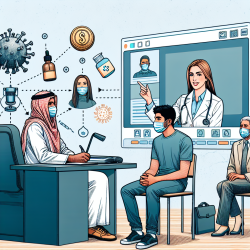Enhancing Online Therapy through Mixed-Mode Data Collection
In the ever-evolving field of speech-language pathology, the integration of technology into therapy services is not just a trend but a necessity. As practitioners, we are constantly seeking methods to improve our services and outcomes for children. One promising approach, highlighted in the research article "Switching from telephone to web-first mixed-mode data collection: Results from the Transition into Adulthood Supplement to the US Panel Study of Income Dynamics," offers valuable insights into how mixed-mode data collection can enhance therapy services.
Understanding Mixed-Mode Data Collection
Mixed-mode data collection involves using multiple methods to gather data, such as combining web-based and telephone interviews. This approach was tested in the Transition into Adulthood Supplement (TAS) to the US Panel Study of Income Dynamics, which aimed to reduce costs and improve response rates among young adults. The study found that mixed-mode data collection led to higher response rates, faster completion times, improved data quality, and reduced costs compared to telephone-only methods.
Applying Mixed-Mode Data Collection in Online Therapy
For practitioners providing online therapy services, such as those at TinyEYE, the findings from this study can be transformative. Here are some practical ways to apply these insights:
- Increase Engagement: By offering multiple modes of communication, therapists can increase engagement with clients and their families. This flexibility can accommodate different preferences and accessibility needs.
- Improve Data Quality: Mixed-mode approaches can enhance the quality of data collected during therapy sessions, allowing for more accurate assessments and tailored interventions.
- Reduce Costs: By optimizing the data collection process, therapy providers can reduce operational costs, potentially allowing for more resources to be allocated to direct therapy services.
Encouraging Further Research
While the study provides compelling evidence for the benefits of mixed-mode data collection, it also opens the door for further research. Practitioners are encouraged to explore how these methods can be tailored to specific populations or therapy goals. By conducting pilot studies or collaborating with researchers, therapists can contribute to the growing body of evidence supporting data-driven practices in speech-language pathology.
Conclusion
As we continue to integrate technology into our therapy practices, embracing data-driven approaches like mixed-mode data collection can significantly enhance the quality and effectiveness of our services. By leveraging these insights, we can create better outcomes for the children we serve, ensuring that they receive the best possible care.
To read the original research paper, please follow this link: Switching from telephone to web-first mixed-mode data collection: Results from the Transition into Adulthood Supplement to the US Panel Study of Income Dynamics.










